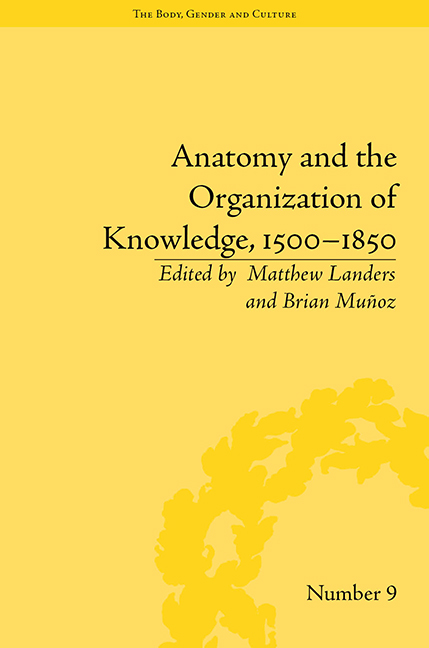Book contents
- Frontmatter
- CONTENTS
- List of Contributors
- List of Figures
- Introduction
- Part I The Body as a Map
- 1 Early Modern Dissection as a Physical Model of Organization
- 2 ‘Who Will Not Force a Mad Man to be Let Blood?’: Circulation and Trade in the Early Eighteenth Century
- 3 Earth's Intelligent Body: Subterranean Systems and the Circulation of Knowledge, or, The Radius Subtending Circumnavigation
- 4 ‘After an Unwonted Manner’: Anatomy and Poetical Organization in Early Modern England
- 5 Subtle Bodies: The Limits of Categories in Girolamo Cardano's De Subtilitate
- Part II The Collective Body
- Part III Bodies Visualized
- Notes
- Index
2 - ‘Who Will Not Force a Mad Man to be Let Blood?’: Circulation and Trade in the Early Eighteenth Century
from Part I - The Body as a Map
- Frontmatter
- CONTENTS
- List of Contributors
- List of Figures
- Introduction
- Part I The Body as a Map
- 1 Early Modern Dissection as a Physical Model of Organization
- 2 ‘Who Will Not Force a Mad Man to be Let Blood?’: Circulation and Trade in the Early Eighteenth Century
- 3 Earth's Intelligent Body: Subterranean Systems and the Circulation of Knowledge, or, The Radius Subtending Circumnavigation
- 4 ‘After an Unwonted Manner’: Anatomy and Poetical Organization in Early Modern England
- 5 Subtle Bodies: The Limits of Categories in Girolamo Cardano's De Subtilitate
- Part II The Collective Body
- Part III Bodies Visualized
- Notes
- Index
Summary
In his 1690 preface to Political Arithmetick, William Petty explained:
The Method I take to do this, is not yet very usual; for instead of using only comparative and superlative Words, and intellectual Arguments, I have taken the course (as a Specimen of the Political Arithmetick I have long aimed at) to express my self in Terms of Number, Weight, or Measure; to use only Arguments of Sense, and to consider only such Causes, as have visible Foundations in Nature.
Petty had been trained in medicine and was among the first generation to teach Harvey's theory of circulation at Oxford. As his preface indicates, Petty was fascinated by mathematics’ apparent capacity to give experiential, even sensual, validity to ideas that are fundamentally abstract. Convinced by Harvey's argument, Petty saw the potential of applying a new sort of reasoning to other subjects of philosophical concern, including politics, sovereignty and wealth. And even those who were less interested in mathematical reasoning appreciated the implications of Harvey's mathematically-inflected concept of circulation for the nation's financing challenges.
Described in the 1628 publication of De motu cordis and taught by Harvey as part of the natural philosophy course of study at Cambridge, the theory that the heart forces blood through the body in a cyclical-motion circulatory system suggested how money, like blood, could be recirculated, increasing wealth and production through continuous repetition rather than through an increased supply of bullion into the system.
- Type
- Chapter
- Information
- Anatomy and the Organization of Knowledge, 1500–1850 , pp. 25 - 36Publisher: Pickering & ChattoFirst published in: 2014



